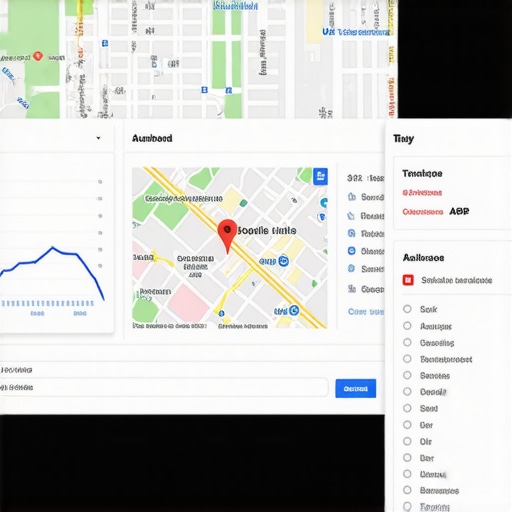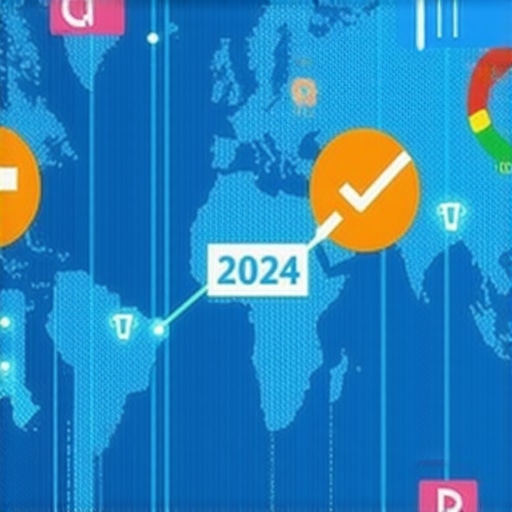Unveiling the Advanced Dynamics of Maps SEO in the Context of Google’s Evolving Algorithms
In the rapidly shifting landscape of local search, understanding sophisticated Maps SEO techniques becomes paramount for maintaining and enhancing Google visibility. As digital ecosystems grow more competitive, leveraging expert insights into these methods can significantly elevate your geographic search prominence. This article delves into the nuanced strategies that industry leaders employ to dominate local search results, especially in the context of Google’s latest algorithmic updates in 2024.
How Can We Leverage Semantic SEO to Outperform Competitors on Google Maps?
Semantic SEO is transforming how local businesses articulate their relevance. By optimizing content for contextually related keywords—beyond simple location names—businesses can align more closely with Google’s understanding of user intent. For instance, integrating LSIs like “local business optimization,” “Google My Business (GMB) ranking factors,” and “local search ranking signals” into your map listings creates multidimensional relevance. To maximize this, ensure your NAP (Name, Address, Phone Number) consistency, enriched with semantic variations, is meticulously maintained across all platforms. For deeper insights, consult our comprehensive guide.
What Role Do User Engagement Signals Play in Enhancing Map Visibility?
Beyond traditional SEO metrics, engagement signals such as click-through rates, review quality, and user interaction patterns significantly influence Google’s local ranking algorithms. Implementing strategic review solicitations and ensuring prompt responses cultivate a trustworthy reputation, reinforcing your position. Advanced practitioners analyze heatmaps and interaction analytics to refine their map listing features and call-to-action prompts, thereby increasing user engagement. Such sophisticated tactics often distinguish top-tier local search performers.
Could There Be Hidden Factors in Google’s Map Ranking Algorithm?
What are the lesser-known signals that could impact local map rankings in 2024?
While core factors like proximity, relevance, and prominence dominate, emerging signals include behavioral metrics such as dwell time and repeat visits on your Google My Business profile, as well as the quality of your local backlinks. Some experts suggest that voice search optimization is increasingly influencing map rankings, especially as voice queries tend to be contextually richer. Keeping an eye on these subtle factors and adapting your strategies accordingly can provide a competitive edge. For more detailed tactics, explore our latest strategies.
How Can Local Link-Building Amplify Your Maps SEO Results?
High-authority backlinks from local sources—such as regional chambers of commerce, industry associations, and local news outlets—are invaluable. They not only boost your domain authority but also reinforce your local relevance in Google’s eyes. Implementing a targeted outreach campaign and creating locally-focused content can generate these valuable links. This approach, combined with citation management, forms a robust foundation for improving your map ranking.
For ongoing updates and expert-level guidance on Google Maps SEO, regularly consult authoritative sources like Search Engine Journal and participate in specialized forums to exchange insights with industry peers.
Finally, consider exploring our comprehensive Maps SEO strategies to stay at the forefront of local search optimization in 2024.
Unlocking Hidden Signals: How Can We Detect Subtle Google Maps Ranking Factors?
As Google’s algorithms become increasingly sophisticated, understanding the nuanced signals influencing local map rankings is essential for staying ahead. Advanced SEO practitioners are now examining behavioral metrics such as dwell time on your Google My Business profile, repeat visits, and interaction patterns that go beyond traditional relevance and prominence factors. Additionally, analyzing backlink quality from hyper-local sources—like regional blogs or industry-specific directories—can reveal overlooked opportunities for boosting visibility. These hidden signals, often underestimated, can significantly impact your rankings when properly optimized. For a detailed breakdown of such factors, explore our latest strategies.
Are You Leveraging Local Content and Community Engagement to Its Full Potential?
Engaging with your local community through content creation and participation can dramatically enhance your local relevance. This includes hosting local events, sponsoring community initiatives, or publishing stories about local partnerships on your website and social media. These activities generate valuable local backlinks and foster trust—both crucial for Google Maps SEO. Moreover, incorporating user-generated content such as reviews and testimonials not only enriches your profile but also signals active community involvement, which Google values highly. To learn more about integrating community engagement into your SEO strategy, visit our Maps SEO techniques.
What additional tools or frameworks can help us analyze and optimize our local search presence effectively?
Leveraging advanced analytics tools like BrightLocal, Whitespark, or SEMrush can provide comprehensive insights into your local SEO performance. These platforms offer detailed reports on citation consistency, review management, local backlinks, and competitor analysis, enabling data-driven decision-making. Implementing a structured framework such as the Local SEO Audit Cycle—which includes auditing citations, reviews, on-page signals, and backlink profiles—ensures continuous improvement. For a more technical approach, integrating APIs like Google Places API can help automate data collection and performance tracking, streamlining your optimization efforts. For expert guidance on deploying these tools, consult our comprehensive guide.
If you’re looking to elevate your local search game further, sharing your experiences or questions in the comments can foster valuable peer insights. Also, consider exploring related topics like effective Maps SEO strategies for 2024 to stay ahead of the curve.
Harnessing Behavioral Data to Fine-Tune Your Google Maps Optimization Strategies
In the relentless pursuit of local search dominance, sophisticated SEO practitioners are increasingly turning to behavioral analytics to uncover hidden opportunities. Beyond traditional metrics, metrics such as dwell time—the duration a user spends viewing your GMB profile—and repeat visitation patterns offer invaluable insights into user engagement quality. These signals, often overlooked, serve as subtle yet powerful indicators of a business’s local prominence. By integrating tools like BrightLocal or Whitespark, SEO experts can monitor these behavioral cues and adapt their strategies accordingly, optimizing for increased user interaction and ultimately higher rankings.
Leveraging Localized Content and Community-Centric Campaigns for Long-Term Map Visibility
In-depth community engagement remains a cornerstone of advanced Maps SEO. Practical implementation involves creating hyper-local content that resonates with your immediate audience—think about publishing detailed stories about local events, interviews with community figures, or case studies of regional projects. These efforts not only generate authoritative backlinks from local sources but also foster trust and relevance in Google’s eyes. Moreover, sponsoring or co-hosting community initiatives amplifies this effect, as it results in valuable local citations and backlinks from regional directories, newspapers, and blogs. Integrating user-generated content, such as reviews and testimonials, further cements your presence as a trusted community pillar.
What Are the Emerging Technical Frameworks Supporting Next-Level Maps SEO?
How can APIs and automation tools revolutionize local search management? Advanced SEO professionals are increasingly deploying APIs like the Google Places API to automate data collection—tracking your local rankings, citation consistency, and backlink profiles in real-time. These tools enable dynamic adjustments based on performance metrics, reducing manual effort while increasing precision. Combining these with robust frameworks such as the Local SEO Audit Cycle—which systematically reviews citations, reviews, on-page factors, and backlinks—ensures continuous optimization and rapid adaptation to algorithm changes. For example, integrating API-driven dashboards can alert you to drops in key indicators, prompting immediate strategic responses. To master these technical frameworks, consult curated guides like Moz’s Local SEO Strategy Framework.

Illustration of a local SEO dashboard showing API data integration for real-time Google Maps ranking analysis.
Why Is Hyper-Local Backlink Building Critical in 2024’s Competitive Landscape?
While broad backlink strategies have their place, hyper-local backlinks from niche regional sources are increasingly vital. These include backlinks from local industry directories, community blogs, and regional chambers of commerce that pass highly relevant authority signals to Google. Effective outreach campaigns involve establishing partnerships with local influencers, sponsoring events with media coverage, and creating content tailored to local interests that naturally attract backlinks. This targeted approach boosts your local relevance and domain authority, directly impacting your Google Maps rankings. Regularly auditing your backlink profile with tools like Ahrefs or SEMrush helps ensure the quality and relevance of these backlinks, safeguarding your rankings from potential penalties.
If you’re eager to push your local SEO efforts even further, engaging with industry forums and attending local SEO conferences can provide fresh insights and networking opportunities. Remember, continuous learning and adaptation are key to maintaining your competitive edge in 2024’s dynamic landscape.
Harnessing AI and Machine Learning for Hyper-Localized Optimization
As the digital landscape evolves, integrating AI-driven tools to analyze hyper-local search queries can dramatically refine your Maps SEO approach. Machine learning algorithms can identify emerging patterns in user behavior, enabling proactive adjustments to your content and citation strategies. For instance, deploying AI-powered sentiment analysis on reviews can uncover nuanced community perceptions, guiding tailored engagement tactics. Furthermore, leveraging AI to optimize your Google My Business profile—through automated keyword suggestions and photo curation—ensures your listing remains highly relevant and engaging. Exploring these cutting-edge techniques can position your business at the forefront of local search dominance in 2024.
Why Advanced Schema Markup and Structured Data Are Game Changers in Map Rankings
Implementing sophisticated schema markup—such as LocalBusiness, Product, and Service schemas—can significantly enhance how Google interprets your business information. Enriching your website’s structured data facilitates rich snippets in local search results, increasing click-through rates and reinforcing your relevance. Innovative developers are now utilizing JSON-LD scripts to embed dynamic data that updates in real-time, reflecting changes in your offerings or availability. According to Moz’s recent whitepaper on schema implementation, businesses that leverage structured data see measurable improvements in local pack visibility. Mastering these technical enhancements offers a competitive edge in 2024’s crowded local search environment.
What Are the Critical Technical SEO Frameworks Supporting Local Map Optimization?
In-depth technical frameworks, such as the Advanced Local SEO Audit Cycle, encompass elements like canonicalization, hreflang tags for multilingual markets, and server response optimization for faster load times. Automating these processes with APIs—like Google’s My Business API—allows real-time data synchronization across platforms, reducing manual errors and ensuring consistency. Integrating cloud-based monitoring solutions with AI analytics offers predictive insights into potential ranking fluctuations, enabling preemptive corrective actions. For expert-level guidance, refer to authoritative sources like SEMrush’s Local SEO Toolkit, which offers step-by-step frameworks tailored for 2024’s algorithmic landscape.

Illustration of a local SEO dashboard featuring real-time data analytics and API integrations for Google Maps optimization.
How Can Voice Search Optimization Transform Your Local SEO Strategy?
With voice searches accounting for a growing share of local queries, optimizing for conversational keywords and natural language becomes imperative. Implementing structured data for voice-enabled devices ensures your business information is easily accessible through voice assistants like Google Assistant and Alexa. Techniques include creating FAQ pages with long-tail keywords and optimizing your Google My Business description for voice relevance. According to a recent report by Search Engine Land, businesses that adapt their content for voice search can achieve higher visibility in local voice-driven results, translating into increased foot traffic and inquiries. Embrace these innovations to future-proof your Maps SEO efforts in 2024.
What Role Do Local Influencers and Community Ambassadors Play in Elevating Map Visibility?
Engaging local influencers and community ambassadors can generate authentic backlinks and social signals that Google interprets as trust indicators. Collaborating with regional micro-influencers to create co-branded content, host events, or participate in community initiatives amplifies your local relevance. These activities foster organic mentions across local media outlets and social platforms, enhancing your online reputation. Regularly tracking influencer engagement metrics through platforms like BuzzSumo or Traackr ensures your outreach remains strategic and impactful. Harnessing community-driven advocacy can serve as a powerful catalyst for elevating your Google Maps ranking in 2024.
How Do Advanced Competitor Analysis and Niche Market Focus Drive Superior Local Rankings?
Employing granular competitor analysis tools enables the identification of niche markets and underserved segments within your locality. Analyzing competitors’ backlink profiles, review strategies, and content gaps reveals opportunities for differentiation. Developing hyper-targeted content for specific community needs—such as regional events or local issues—can establish your authority and relevance. Tools like Ahrefs and SEMrush facilitate ongoing monitoring of your niche positioning, allowing dynamic adjustments to your mapping and citation strategies. Deep market segmentation and competitor intelligence are foundational for surpassing rivals in Google Maps rankings in 2024.
Ready to Elevate Your Local Search Strategy?
If you’re committed to mastering these advanced techniques, engaging with specialized SEO communities and attending industry conferences can provide invaluable insights. Implementing AI-driven tools, technical schema enhancements, and community engagement strategies will position your business as a local authority. Stay proactive, continually optimize, and leverage data-driven insights to dominate your geographic market—because in 2024, only the most sophisticated strategies will triumph in Google Maps SEO. For expert guidance and tailored solutions, contact our team today and unlock your full local search potential!
Expert Insights & Advanced Considerations
1. Leveraging Semantic SEO for Hyper-Local Relevance
In 2024, mastering semantic SEO is crucial for outmaneuvering competitors. Deeply integrating related keywords like “local business optimization” and “Google My Business ranking factors” ensures your map listings resonate with Google’s evolving understanding of user intent. Maintaining NAP consistency across all platforms fortifies your relevance and authority. Staying ahead necessitates an expert grasp of semantic variations and their strategic deployment, which can be refined through continuous analysis and adaptation.
2. Behavioral Signals as Ranking Enhancers
Beyond traditional metrics, behavioral signals such as dwell time, repeat visits, and review interactions are increasingly impacting local rankings. Advanced practitioners utilize analytics tools like BrightLocal or Whitespark to monitor these cues, refining engagement strategies accordingly. Engaging users through prompt review responses and interactive content elevates your profile’s trustworthiness and visibility, positioning your business as a local authority.
3. Harnessing Localized Content & Community Engagement
Deep community integration via localized content, event participation, and user-generated reviews significantly boosts local relevance. Strategic sponsorships and storytelling foster backlinks and trust signals that Google recognizes. Regularly auditing backlink profiles and citation quality with sophisticated tools ensures sustained relevance and ranking stability.
4. Technical Frameworks & API Automation
Deploying APIs like Google Places API for real-time data synchronization enables dynamic management of your local search presence. Automating citation audits, review tracking, and backlink analysis through these tools streamlines optimization workflows. Incorporating AI-driven dashboards facilitates rapid response to ranking fluctuations, ensuring your strategies remain agile and data-driven.
5. Voice Search & Structured Data Optimization
Optimizing for voice search involves creating long-tail conversational keywords and implementing schema markup such as LocalBusiness and FAQ structured data. These technical enhancements improve your chances of capturing voice-driven local queries, a rapidly growing segment that can significantly impact visibility and foot traffic.
Curated Expert Resources
- Search Engine Journal: Renowned for in-depth industry insights, especially on local SEO and Google Maps strategies, offering cutting-edge tactics and case studies.
- Moz’s Local SEO Guide: A comprehensive resource on technical schema, citation management, and technical SEO frameworks tailored for local search optimization.
- BrightLocal Blog: Focused on behavioral metrics, review management, and real-time analytics, providing tools and insights for advanced practitioners.
- SEMrush’s Local SEO Toolkit: Offers detailed audit frameworks, competitor analysis, and API integration strategies to streamline local SEO efforts.
- Google’s Official Developers Documentation: Essential for mastering API deployment, structured data implementation, and technical updates affecting local SEO.
Final Expert Perspective
In 2024, excelling in Google Maps SEO demands a sophisticated blend of semantic understanding, behavioral analysis, and technical mastery. The most impactful strategies involve leveraging advanced data analytics, community engagement, and automation tools to maintain a competitive edge. Staying abreast of evolving algorithm signals—such as voice search optimization, structured data, and hyper-local backlinks—ensures your business sustains high visibility in local searches. Engage with these expert insights, continuously refine your approach, and explore the recommended resources to dominate your geographic niche effectively. For those committed to mastery, reaching out for tailored consultation or participating in specialized forums can unlock new levels of success in Google Maps SEO.




Benjamin Carter
This post really underscores how crucial behavioral signals are becoming in Google Maps rankings. I’ve noticed in my own experience that optimizing user engagement—particularly through prompt review responses and interactive content—can genuinely elevate local visibility. It’s fascinating to see how advanced analytics tools like BrightLocal and Whitespark are now essential for monitoring these subtle cues. I wonder, though, how smaller local businesses with limited resources can effectively implement these sophisticated strategies. Have any smaller brands found cost-effective ways to leverage API automation or community-focused content for local SEO? I’d love to hear practical advice or tools that can help level the playing field without breaking the bank. The blend of technical and community-driven tactics offers so many avenues for improving rankings, but small businesses often struggle with resource allocation. What are some low-cost yet impactful strategies you’ve seen work well in the current landscape?